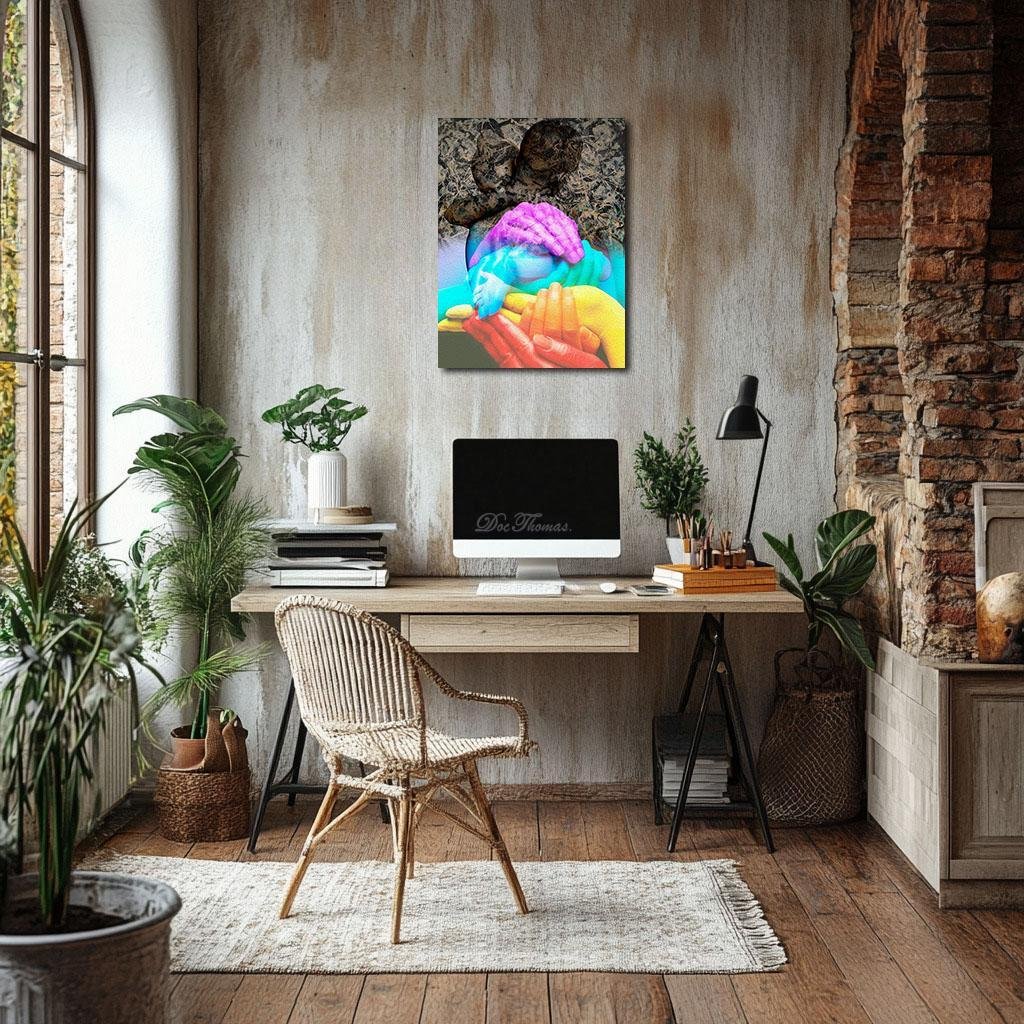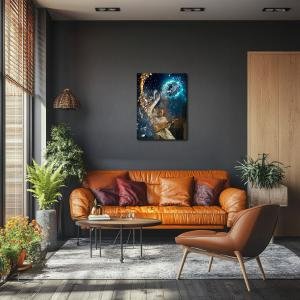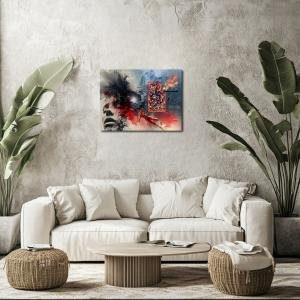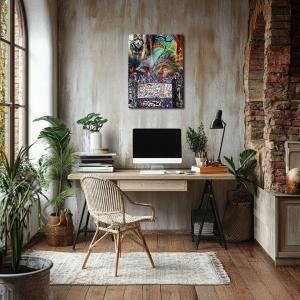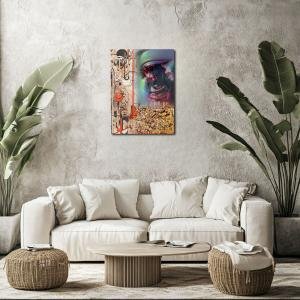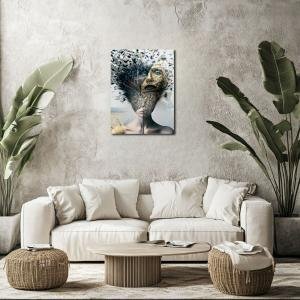Veins of Porcelain: The Cradle Beneath the Storm
Veins of Porcelain: The Cradle Beneath the Storm reinterprets Jackson Pollock’s Greyed Rainbow as a meditation on protection and presence. The chaotic abstraction of the original becomes a stormy veil overhead, fading into the silhouette of an embracing figure. Beneath, a spectrum of vividly colored hands rises in radiant defiance—each hue embodying care, warmth, and resilience. Pollock’s frenetic energy dissolves into quiet guardianship, as gestural noise gives way to the harmony of human touch. This reimagination transforms turbulence into tenderness, reframing abstraction as sanctuary and chromatic chaos as communal healing.
Please see Below for Details…
Hotline Order:
Mon - Fri: 07AM - 06PM
404-872-4663
Veins of Porcelain: The Cradle Beneath the Storm reimagines Jackson Pollock’s Greyed Rainbow as a tactile psalm of human tenderness, where chaos folds not into fury, but into protection. In this conceptual vision, Pollock’s webbed abstraction does not dominate—it hovers as an ancestral storm above, fading into the dark embrace of a silhouetted mother and child. What once was unrelenting entropy is now a soft spectral ceiling, muted and held aloft by the act of love. Below, a spectrum of hands in vivid rainbow hues rises—not as a celebration, but as shield, cradle, and covenant.
The composition plays in vertical revelation. At the top lies Pollock’s original abstraction—once frantic, now receding like a memory suspended in charcoal mist. The figures beneath—two lovers or perhaps a mother and infant—are cast in silhouette, their contours formed from and dissolving into the muted fragments of Pollock’s gestural remnants. They are not victims of the abstraction; they are survivors cradled beneath it. What Pollock once scattered like thunder, here becomes backdrop to intimacy. Below them, a kaleidoscope of disembodied hands—each rendered in luminous, near-synthetic hues—emerge as protectors, empaths, architects of quiet resilience.
Color here is a meditation in contrast. The top registers in slate greys, burnt umbers, and soot-flecked whites—Pollock’s chromatic echo of despair, distance, and psychic overwhelm. But below, color erupts in acts of healing. The radiant red hand symbolizes the primal flame of urgency and passion. Orange follows with warmth and alertness, yellow with clarity and reason. Green soothes, blue listens, and violet comforts. This spectrum does not merely illuminate—it reclaims. Against the visual noise of Pollock’s storm, these hands stand as a new order: calm, unified, and intentional.
As the artist, my thought while reimagining Greyed Rainbow was: what if chaos could be soothed—not erased, but witnessed, held, and layered beneath something gentler? Pollock gave us the language of fracture. I wanted to respond with the language of reunion. His greys scream. My color answers not with silence, but with embrace. The hands are not decorative—they are metaphors for restoration, an anatomy of healing. They offer not escape from the abstract storm, but an anchored place within it. The act of reaching, of cradling, becomes the new architecture.
The silhouette’s posture is maternal, though undefined—open to all forms of intimate interdependence. That ambiguity is essential. This is not a painting about role. It is about gesture. It is about how tenderness survives the greyness that precedes or follows war, illness, grief, or betrayal. The storm is not gone—it hovers, dormant and monumental. But it is no longer the final word. The final word is a touch, and in that touch: a rainbow not of sky, but of hands.
Pollock’s visual vocabulary remains intact, but subdued. His characteristic splatters and lashes are now threadbare and softened, sinking into the backdrop like old weathered veins. Rather than being the subject, they become the memory. They are the ‘before’ to this composition’s radical ‘after.’ In that sense, this piece is less an interpretation than a reclamation—an answer to the abstraction of emotional collapse with the abstraction of emotional care.
In this reimagining, Greyed Rainbow transforms from spectacle to sanctuary. Where Pollock cast pigment like lightning, I’ve cast it like light filtering through human skin. The rainbow still exists, but it is no longer celestial—it is embodied. It is what hands do when the world fails to speak.
Add your review
Your email address will not be published. Required fields are marked *
Please login to write review!
Looks like there are no reviews yet.

